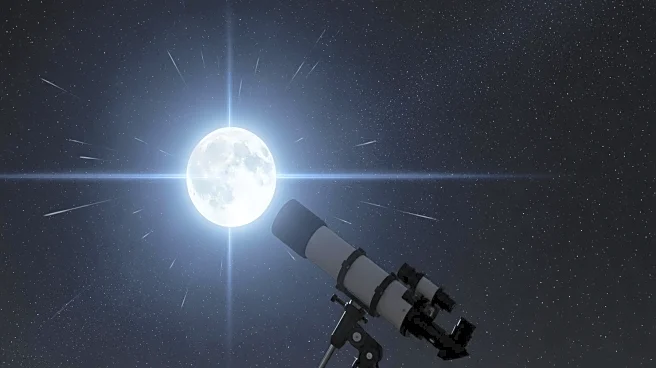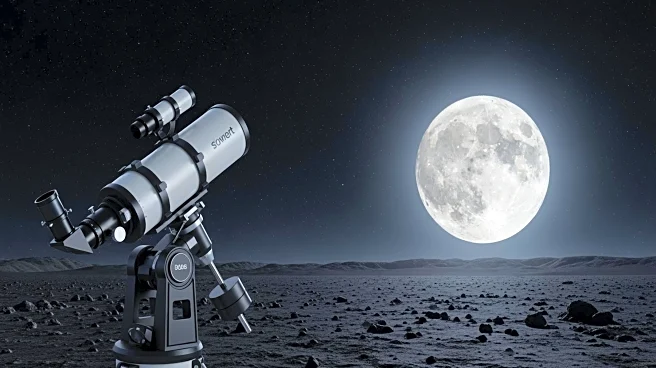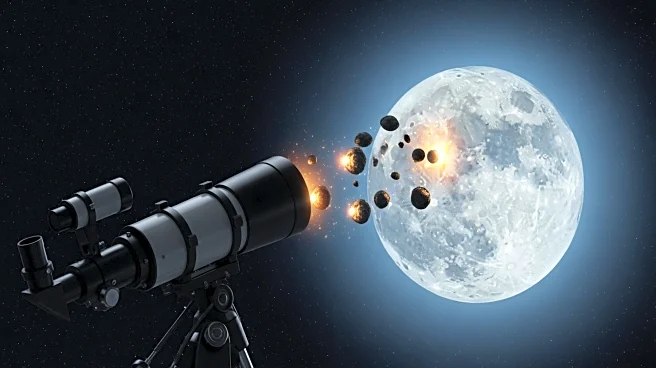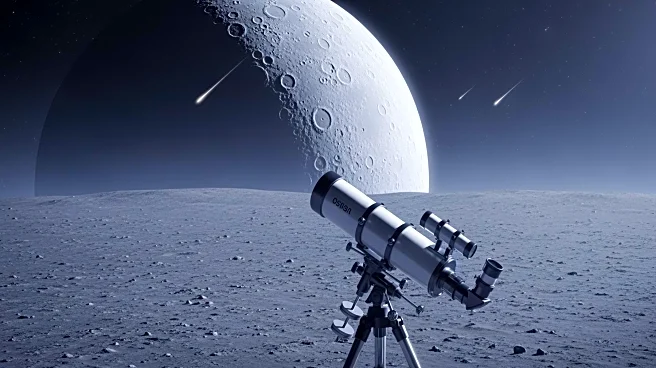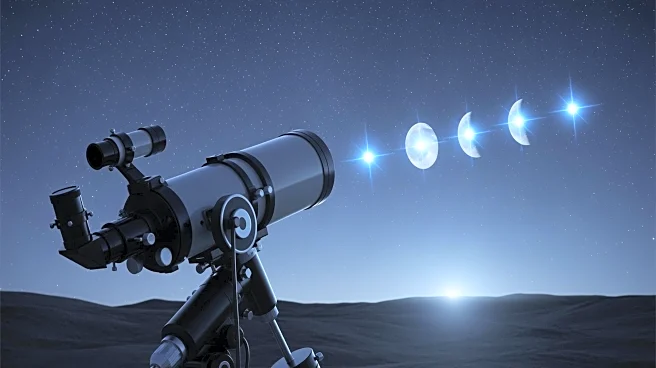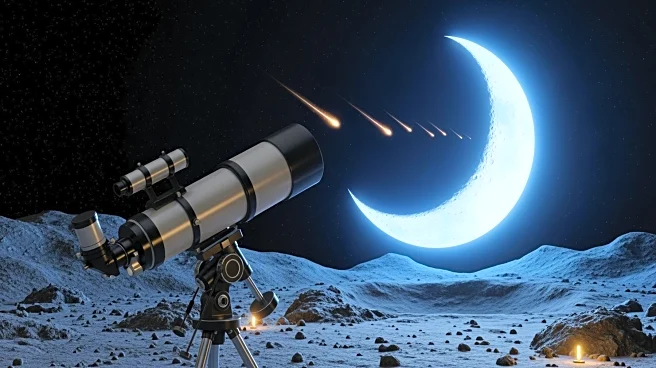What's Happening?
Astronomer Daichi Fujii, curator of the Hiratsuka City Museum in Japan, has captured two mysterious flashes on the moon's surface, leading to speculation about their origin. The first flash was observed
on October 30, followed by a second on November 1. These flashes are believed to be impacts from space rocks associated with the Taurid meteor shower, which occurs annually around late October and early November. The Taurid meteor shower is caused by Earth passing through debris left by the comet Encke. Fujii's observations were made using telescopes equipped with special equipment to detect motion and explosions on the lunar surface. Over the past 15 years, Fujii has recorded nearly 60 impacts on the moon, highlighting the rarity of back-to-back impacts.
Why It's Important?
The observation of these lunar flashes is significant as it provides insight into the frequency and impact of space debris on celestial bodies without atmospheres. The Taurid meteor shower, while harmless to Earth due to its atmosphere, poses a different risk to the moon, where impacts can occur at high velocities, creating fiery craters. This research underscores the importance of monitoring space debris, as future meteor showers could pose a threat to Earth. Studies suggest that larger meteor fragments from the Taurids could become hazardous within the next decade, potentially causing air bursts or ground impacts in populated areas.
What's Next?
Future research and monitoring of the Taurid meteor shower are crucial, especially as studies indicate a potential increase in risk around 2032 and 2036. During these years, larger chunks of space rock may be influenced by Jupiter's gravity, increasing the likelihood of dangerous meteor fragments passing over Earth. Scientists and astronomers will need to continue observing these events to better understand the potential threats and develop strategies to mitigate risks to populated areas.
Beyond the Headlines
The observation of lunar impacts highlights the broader implications of space debris management and the need for international cooperation in monitoring and mitigating potential threats. As space exploration and satellite deployment increase, understanding the dynamics of meteor showers and their potential impacts becomes crucial for both scientific advancement and public safety.
